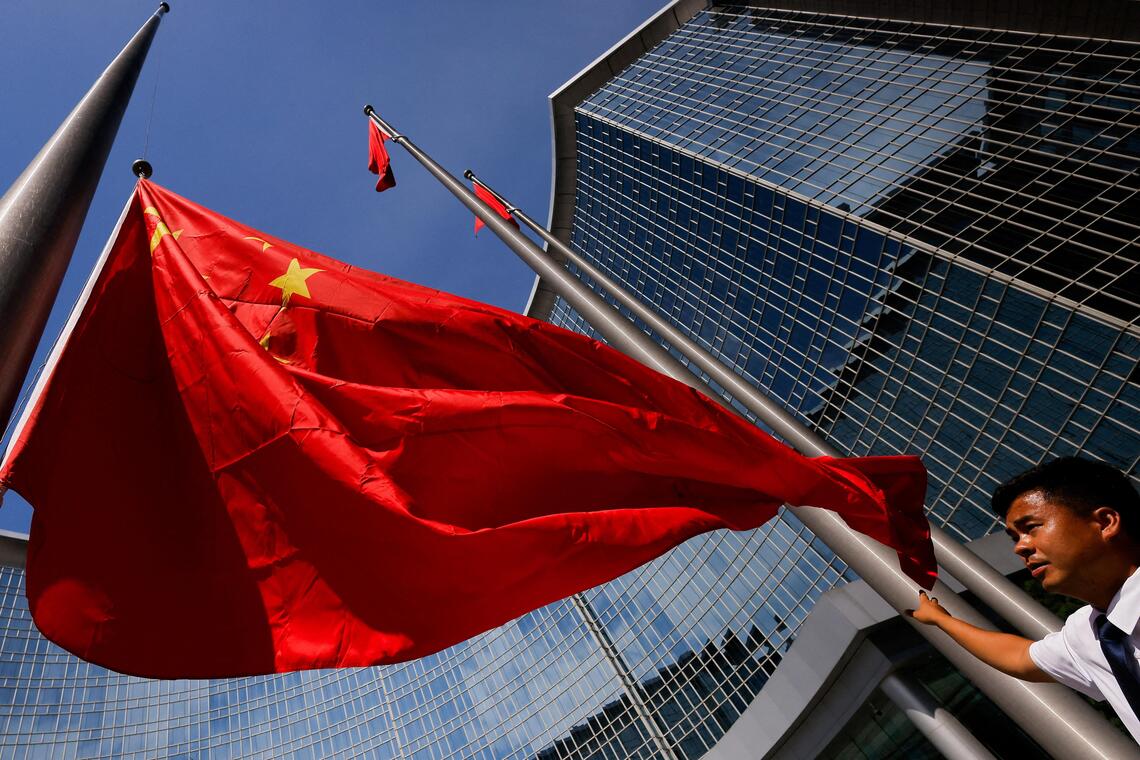Hong Kong – Global money managers are venturing back into China after years of aversion, piqued by a world-beating stock rally and the country’s advances in high-tech industries.
Goldman Sachs Group said global hedge funds in August were the most active in onshore equities in recent years – a stark contrast to 2021, when some clients had deemed the market “uninvestable”.
Pacific Investment Management Co (Pimco) said investors have pivoted away from worrying about risks to missing out. Official data show foreign inflows rising across asset classes, a coordinated advance that’s only happened in three of the past 10 years.
Taken together, these are signs of a turnaround for a market that had fallen out of favour with global investors amid prolonged regulatory crackdowns and a spiralling property crisis. The US$2.7 trillion (S$3.5 trillion) equity China rally in 2025 has proven too compelling to ignore, and global funds’ still-underweight positioning suggests ample room to build exposure.
It’s a far cry from the harrowing years following the 2021 peak, when some money managers said China is just not worth the risk. The narrative has now changed to one of confidence, spurred by its artificial intelligence prowess and economic resilience in the face of US restrictions. Stronger inflows could buttress the yuan and aid President Xi Jinping’s ambition to elevate the currency’s role in global finance.
Timing has also worked in China’s favour. US President Donald Trump’s confrontational trade policies, the Federal Reserve’s rate-cut cycle and a ballooning US budget deficit have encouraged investors to seek alternatives to US dollar assets, prompting a fresh look at the vast Chinese market.
As risk appetite continues to improve and the US dollar weakens, markets with compelling valuation and low global fund positioning – such as China – stand to benefit, said Mr Sung Chang Hwan, a multi-asset portfolio manager with Invesco’s investment solutions team. Mr Sung said his fund has been increasing allocation in Chinese equities.
In the first half of 2025, foreigners boosted their holdings of onshore stocks, bonds, loans and deposits – a simultaneous increase for the first time since 2021. Net foreign inflows to June have already surpassed the 2024 annual tally by about 60 per cent, according to the latest data from the People’s Bank of China (PBOC).
The momentum has likely carried on. Foreign investors overall purchased onshore stocks and bonds on a net basis in August, Mr Li Bin, deputy head for the State Administration of Foreign Exchange, said in a briefing earlier in September.
Underpinning the shift in perception is the technology sector’s advance, as heavyweights including Alibaba Group Holding roll out their own AI models and chipmakers like Cambricon Technologies notch breakthroughs.
“Global investors will increase their allocations to Chinese assets in the coming years,” said Mr Yerlan Syzdykov, global head of emerging markets at Amundi UK. Among the drivers will be a sense of “Fomo” from China’s strong performance and attractively priced opportunities in areas like clean-tech and AI, he said.
The CSI 300 Index, a benchmark for onshore shares, has climbed 16 per cent this quarter to reach more than a three-year high. The tech-focused ChiNext Index has rallied nearly 50 per cent during the period in one of the best performances globally. Despite the advances, the two gauges are still below their 2021 highs.
To some, however, the scars of China’s prolonged market downturn run so deep that returning is a non-starter. A wave of regulatory crackdowns that began in 2021 – spanning sectors from tech to tutoring – sent equities into a tailspin and fuelled the “uninvestable” narrative.
The authorities are also keen to tame market exuberance, suggesting runaway rallies may face scrutiny. Geopolitical tensions mean America’s biggest public and pension funds will continue avoiding China for political reasons.
Nonetheless, growing interest in other asset classes point to a common theme: Beijing is committed to supporting the economy, and the US trade war will only embolden the country’s industrial strength.
Chinese tech companies sold a record amount of yuan-denominated debt in Hong Kong in 2025. The “big growth” in dim sum bond markets has been supported by a broadening investor base across continents, according to Mr Eugene Ng, head of debt capital markets for greater China at HSBC Holdings.
In Tencent Holdings’ bond sale earlier in September, those from the Middle East invested across the curve while high-quality funds from Europe also joined, Mr Ng said. Alibaba’s convertible bond sale was multiple times subscribed, with bidders including long-only investors and hedge funds.
While the revival in risk sentiment has weighed on government bonds, expectations of PBOC easing and China’s low inflation are starting to lure back buyers. The conversation with clients has shifted from “how to de-risk” to “what are the opportunities” in China, said Mr Stephen Chang, managing director and Asia portfolio manager at Pimco. Mr Chang, who co-manages a US$572 million fund that beat 98 per cent of peers in 2025, said he may buy more Chinese government bonds after purchasing some recently.
Foreigners trimmed their holdings of Chinese government bonds in August but the scale of the sell-off eased to just one-fifth of July’s, official data showed.
“The real interest rate of yuan bonds is still relatively high, which provides a very good channel for global investors,” PBOC deputy governor Zou Lan said at a forum in Hong Kong last week.
All of this has been supportive for the yuan, which rose to 7.1 against the US dollar in September – the strongest since last November.
“China is not uninvestable,” said Mr Thomas Fang, head of China global markets at UBS AG. “The vast gap between China’s global economic footprint and the low single-digit allocation from global investors represents a significant long-term opportunity.” BLOOMBERG

